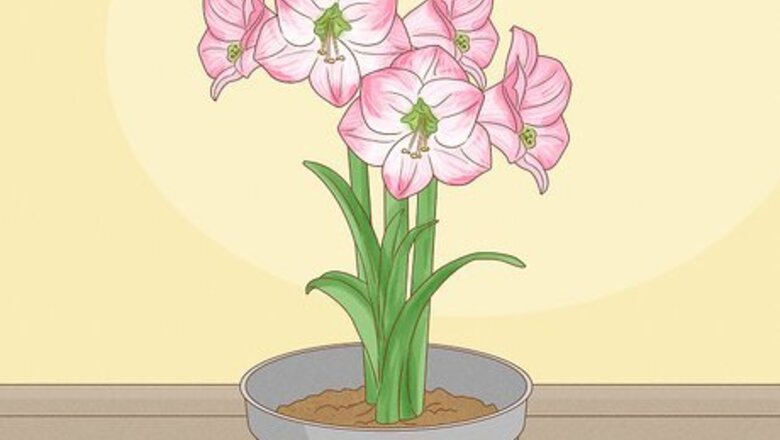
views
Creating the Right Environment for Your Plant
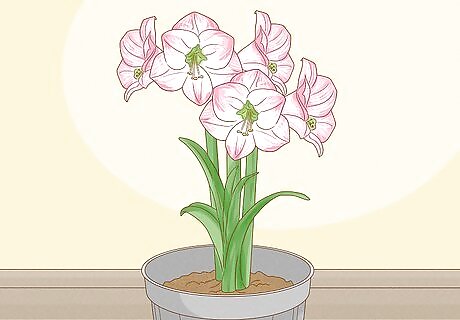
Grow amaryllis indoors at any time of year. Because of the fact you can control the indoor temperature relatively easily, amaryllis plants can be grown at any point during the year. This means you can arrange them to bloom at whatever special time of year you like!
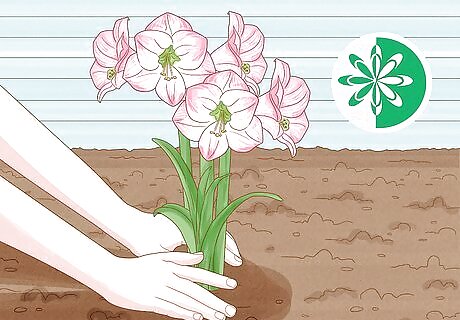
Plant amaryllis outdoors in the spring. Amaryllis plants are in full-flowering mode during the middle of spring. Wait until any chance of frost has passed before planting to make sure your amaryllis has the best chance of flowering. Make sure you find a spot outside that drains well. If the soil still has puddles in it 5-6 hours after a downpour, find somewhere that doesn't. Everything else about planting amaryllis outdoors is the same as planting indoors.

Choose a large container for big, heavy flowers if you're planting inside. Amaryllis bulbs in full bloom can develop really large flowers. Choosing a pot that is large and stable enough to hold them is really important. Depending on the bulb size, pots need to be from 10 to 16 inches (25 to 41 cm) in diameter to have 2 bulbs in each pot. If you are having trouble weighing down the pot, put a little bit of gravel at the bottom.
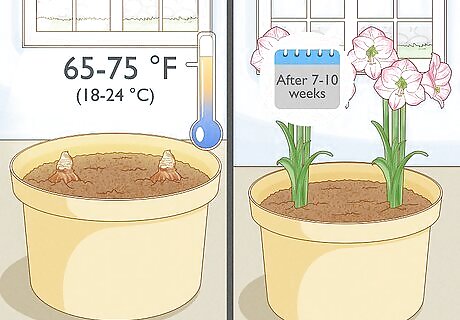
Place your plant where it will receive as much natural light as possible. The ideal temperature for an amaryllis plant is 65–75 °F (18–24 °C) while it is growing. Amaryllis plants like to grow in warmer weather so aim for these temperatures if you can. Once the flowers have bloomed, which will occur in 7-10 weeks, store the plant in a slightly cooler location to help prolong the life of the flowers
Planting the Bulbs
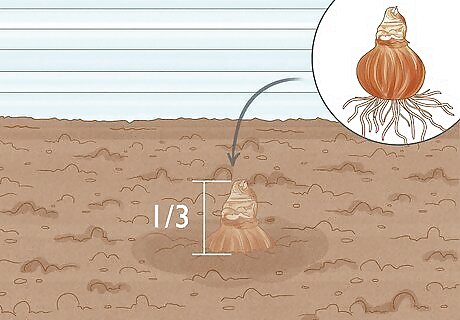
Plant bulbs in a nutritious soil so one-third of the bulb is sticking out. Make sure to dig a hole deep enough in the soil to house the other two-thirds of the bulb. Almost any regular potting mix/soil will do for this as amaryllis plants don’t require any specific type of soil. You can find these mixes at most home goods stores. You should plant the bulb so the stringy roots are in the soil. Avoid damaging the roots when you plant your amaryllis. If you are planting your amaryllis outside, be careful to avoid planting in a clay-based soil as this drains more slowly than sand-based soil. If the roots sit in water for too long, they will get waterlogged and may begin to rot. Add compost to your potting soil to make it nutrient-rich.

Press the soil down to ensure a snug fit for the plant. Doing so ensures there are no air bubbles in the soil and also that the plant is nice and tightly contained in the pot or garden bed. Packing the soil down also helps to ensure that the plant has a strong foundation once it begins to flower.

Water the plant thoroughly to begin with. After the initial watering, amaryllis plants don’t need much attention to grow well and over-watering will lead to root-rot. This means you only need to water the plant when the soil has gone dry to the touch. If you planted the bulbs in a pot, make sure you have a dish underneath it to prevent water leaking out onto whatever surface you have below. Be sure to empty the dish after watering rather than letting the plant sit in the water.
Helping Your Plant Grow
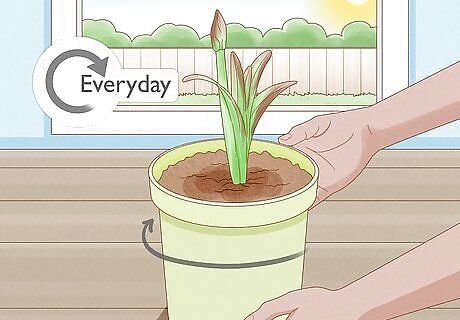
Rotate the pot by a half-turn each day if the plant is inside. Like many plants, amaryllis plants have a tendency to grow towards the light. Rotating the pot each day ensures that the plant will grow straight.
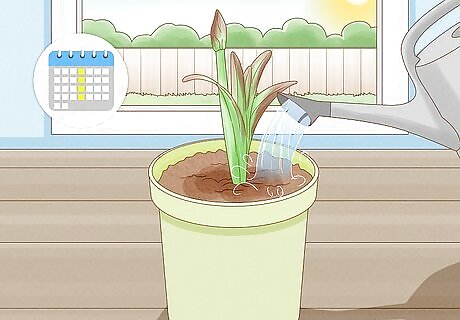
Water once per week when you see stem or leaf growth. Over-watering is the largest problem most people run into with amaryllis plants. They really only need to be watered enough to keep the soil moist but definitely not soggy. Once you see a stem appear, watering once a week from here all the way through blooming is a good measure to start from. Once the plant has started to flower, water more frequently, such as twice per week. The watering needs of a plant do vary slightly depending on the heat and humidity of where the plant is growing, but these measures should be a good estimate.
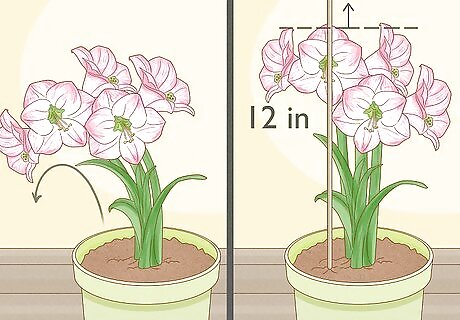
Stake up your stems if they are starting to fall over to one side. The stems of amaryllis plants can sometimes be quite long. This results in the plant falling over in one direction which is not only unattractive, but also unhealthy. Staking up the plant is a very easy way to make sure that the stem doesn’t fall over and cause harm to your plant. Stake a plant up by hammering a long, thin piece of wood into the soil with a mallet, to about 12 inches (30 cm) higher than the plant. After this, tie the stem to the stake at 3-4 different points using pieces of string.
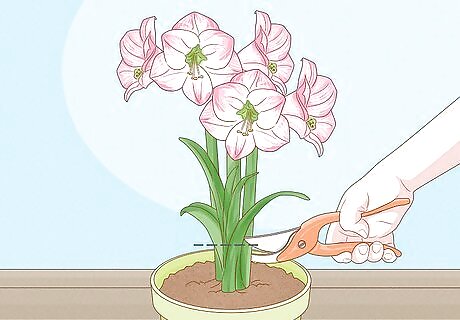
Cut the flowers off at the stem once they have flowered. The color of amaryllis is beautiful so feel free to snip a stem here or there for use in a vase. You can cut the flower off however far down the stem you like, but the further down you cut, the longer it will take to regrow. Trim the stems once the flowers fade, but let the leaves grow until they start to wilt and turn yellow. Cut them down to 2 to 3 in (5.1 to 7.6 cm) above the bulb. Leave the bulb in the ground if you live in an area that doesn’t have frost. Otherwise, store the bulb in a cool, dry place for at least 6 weeks before replanting it in the spring.



















Comments
0 comment